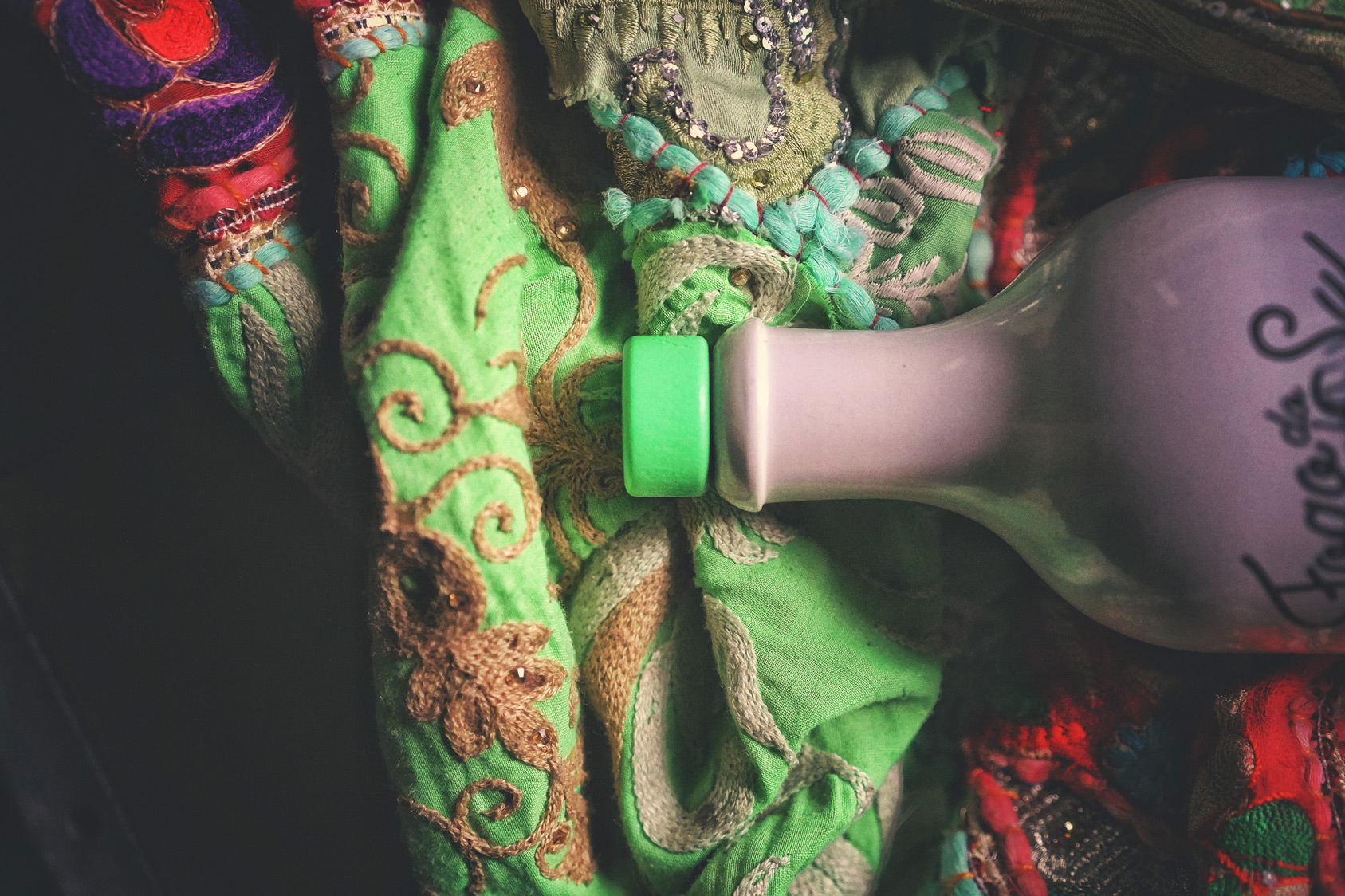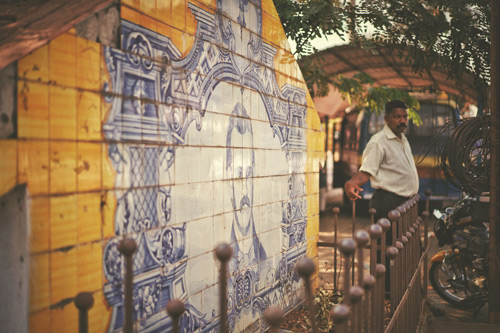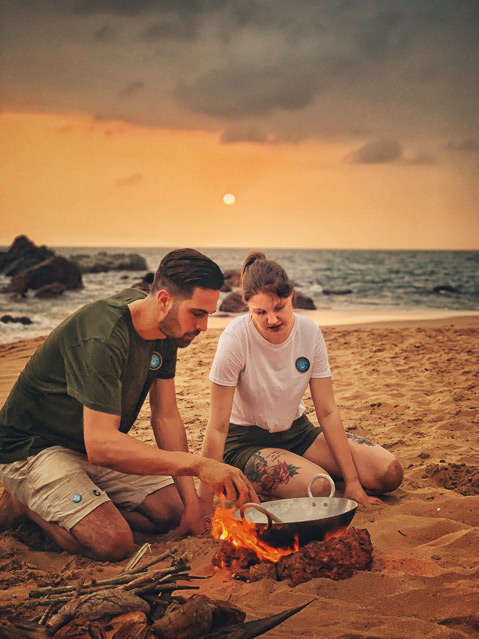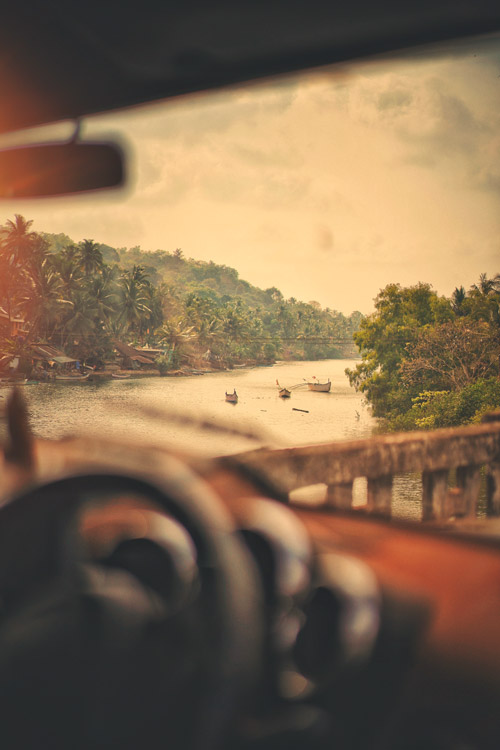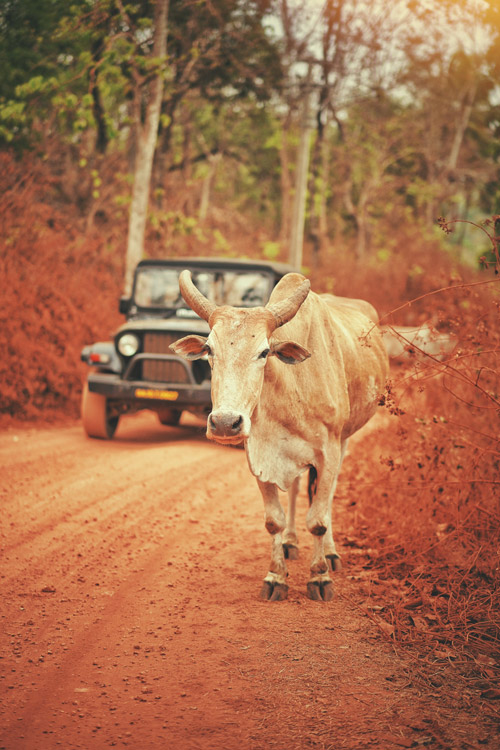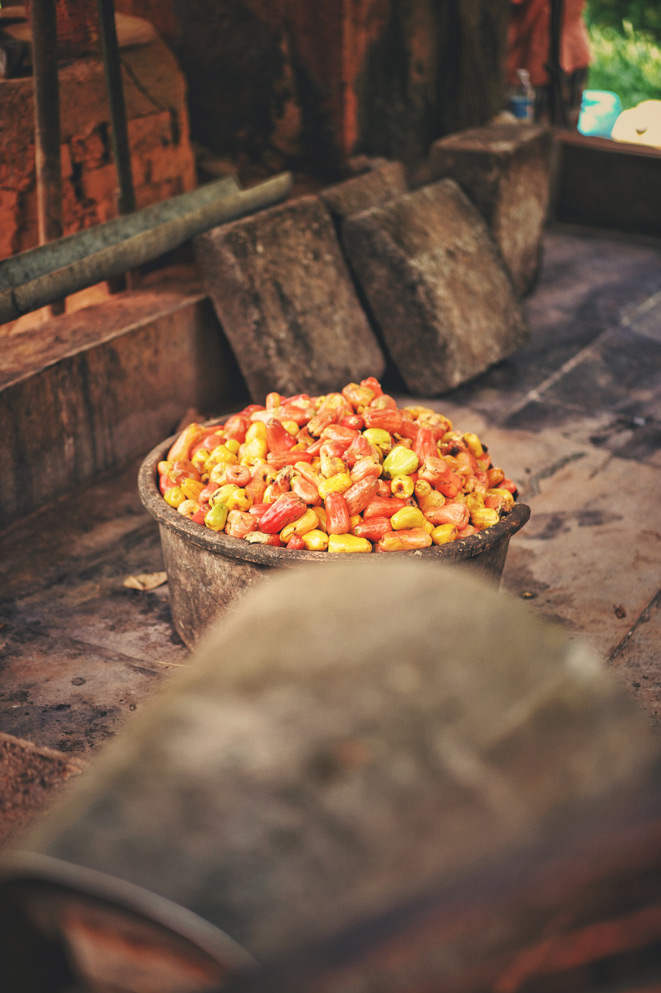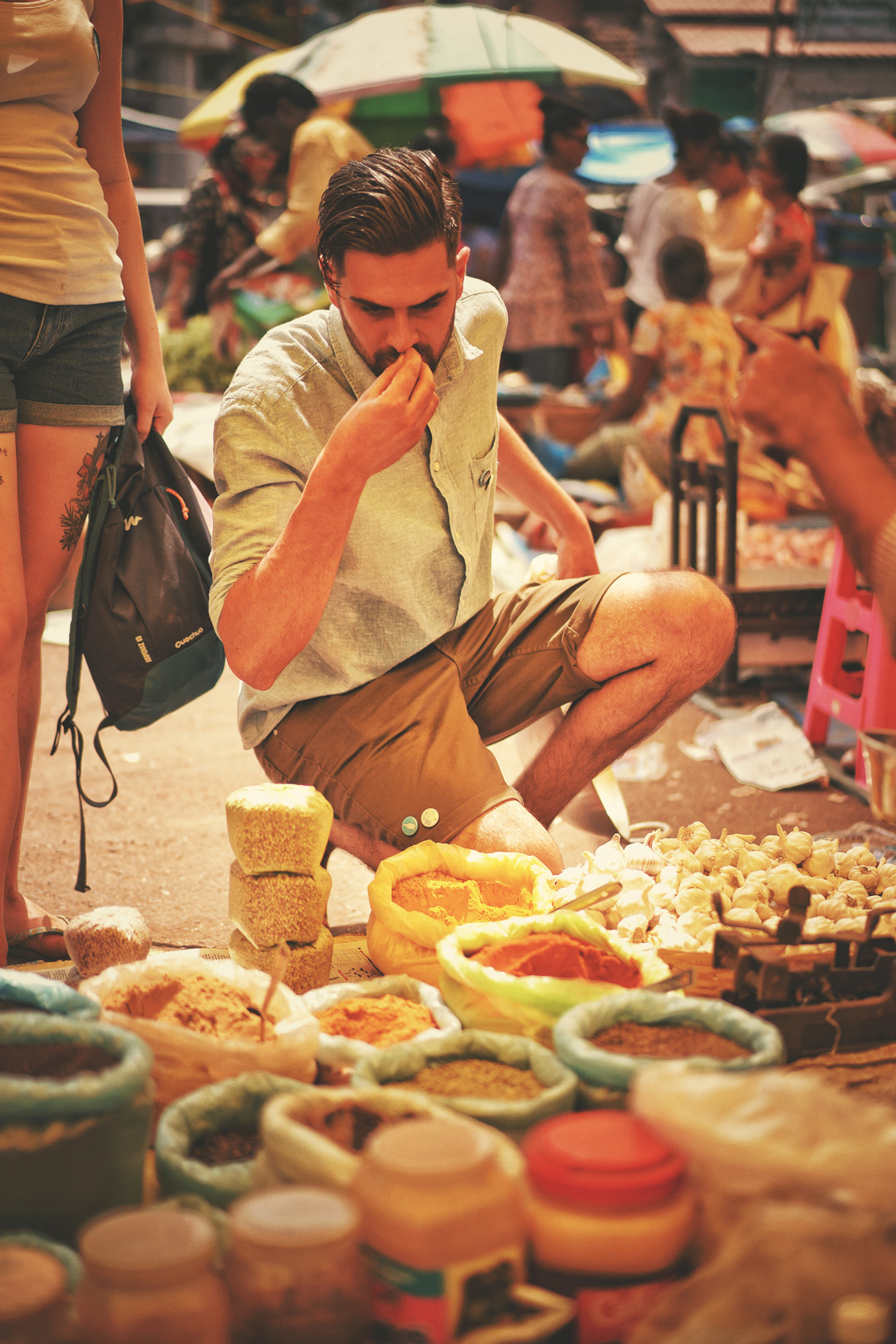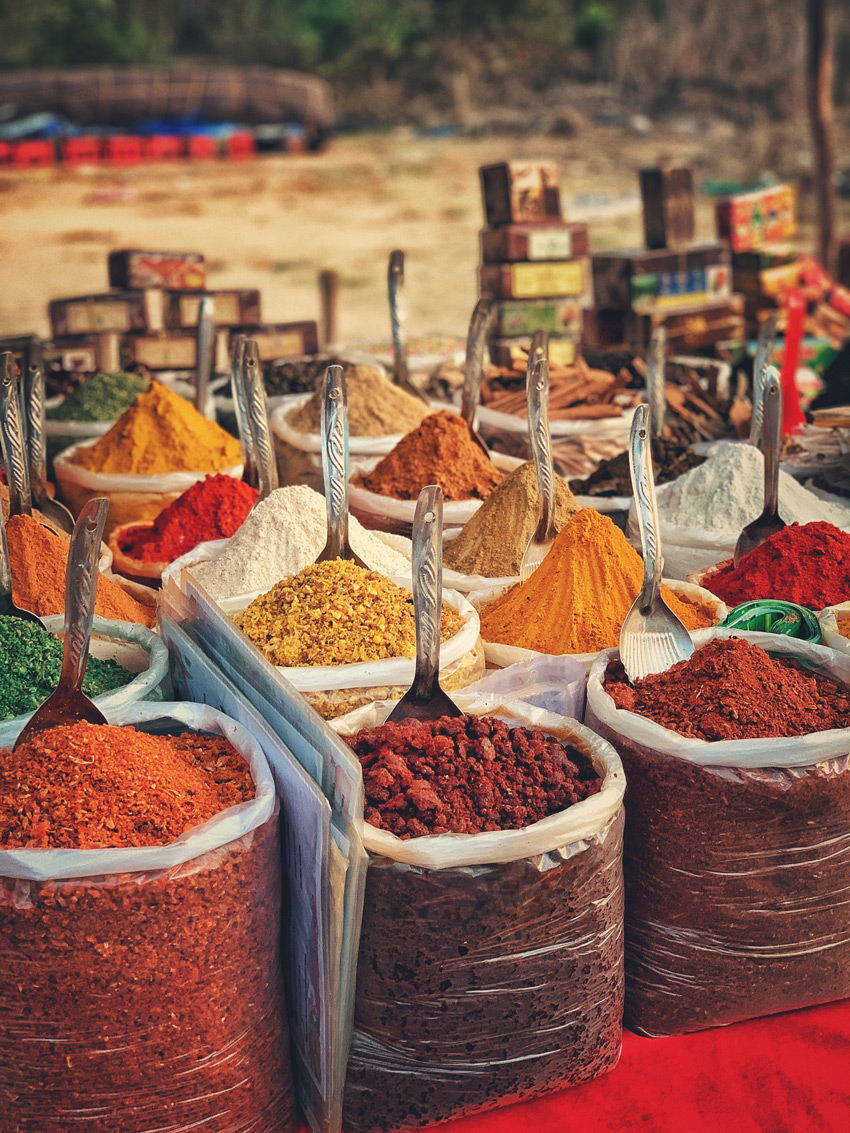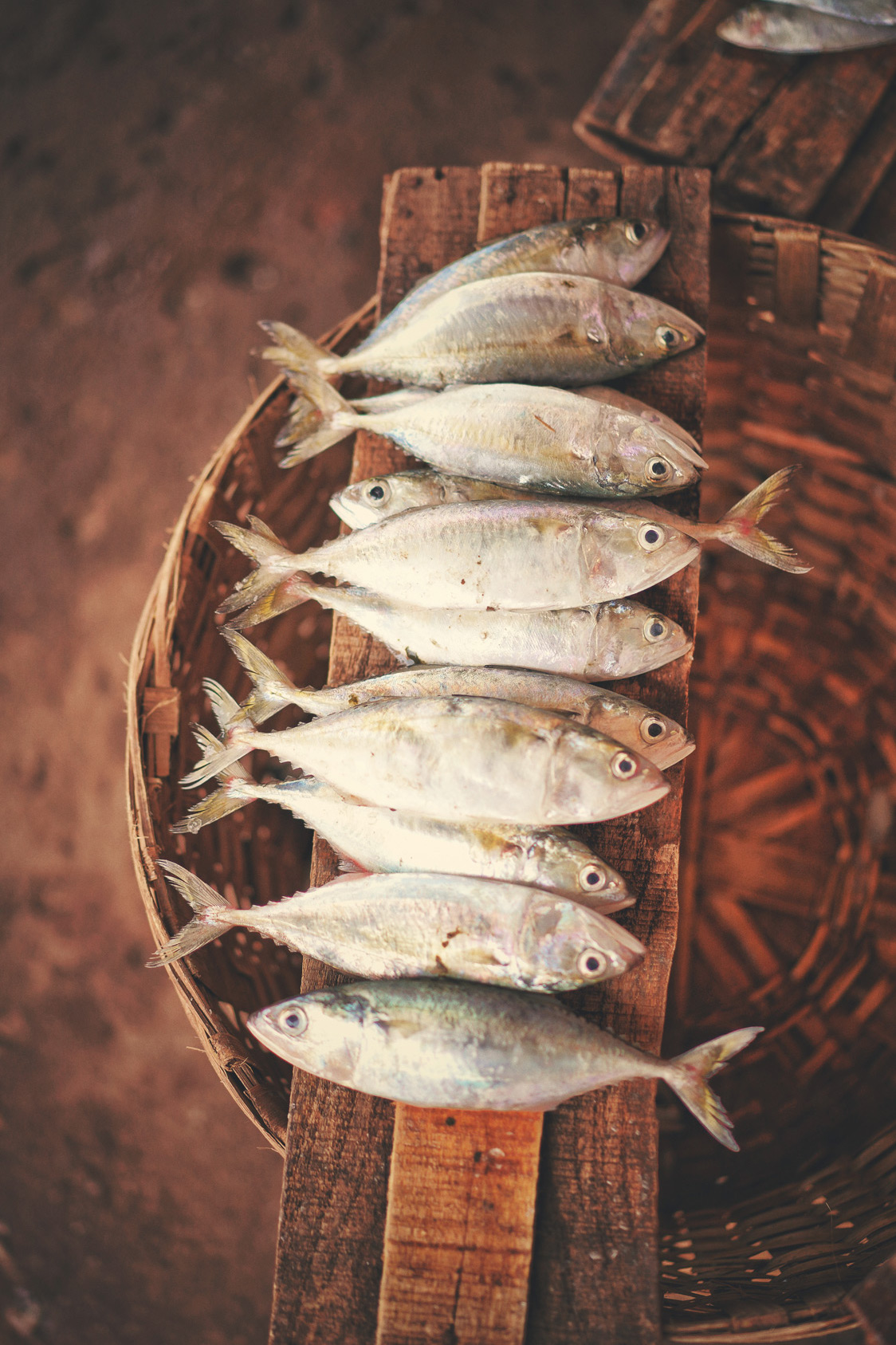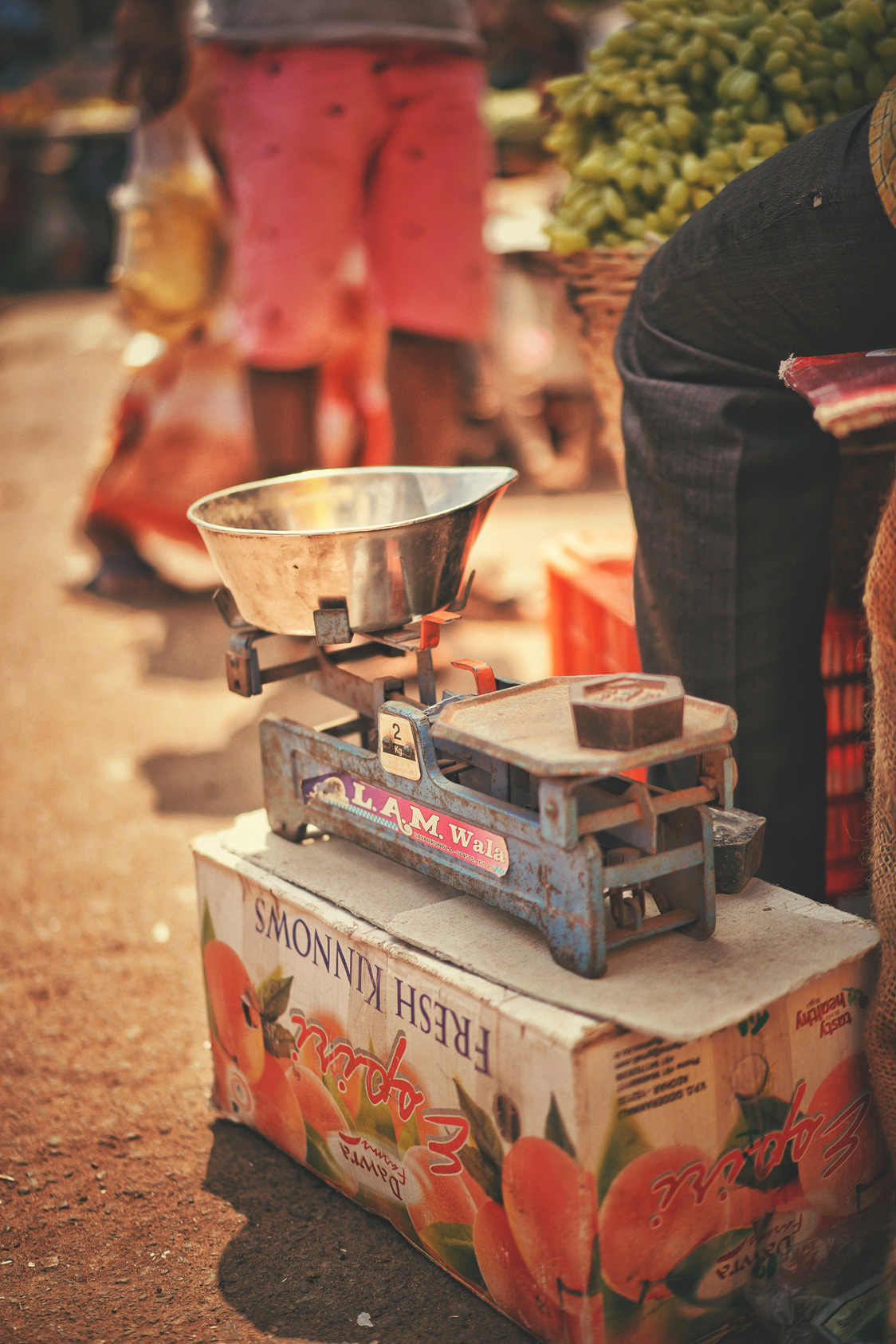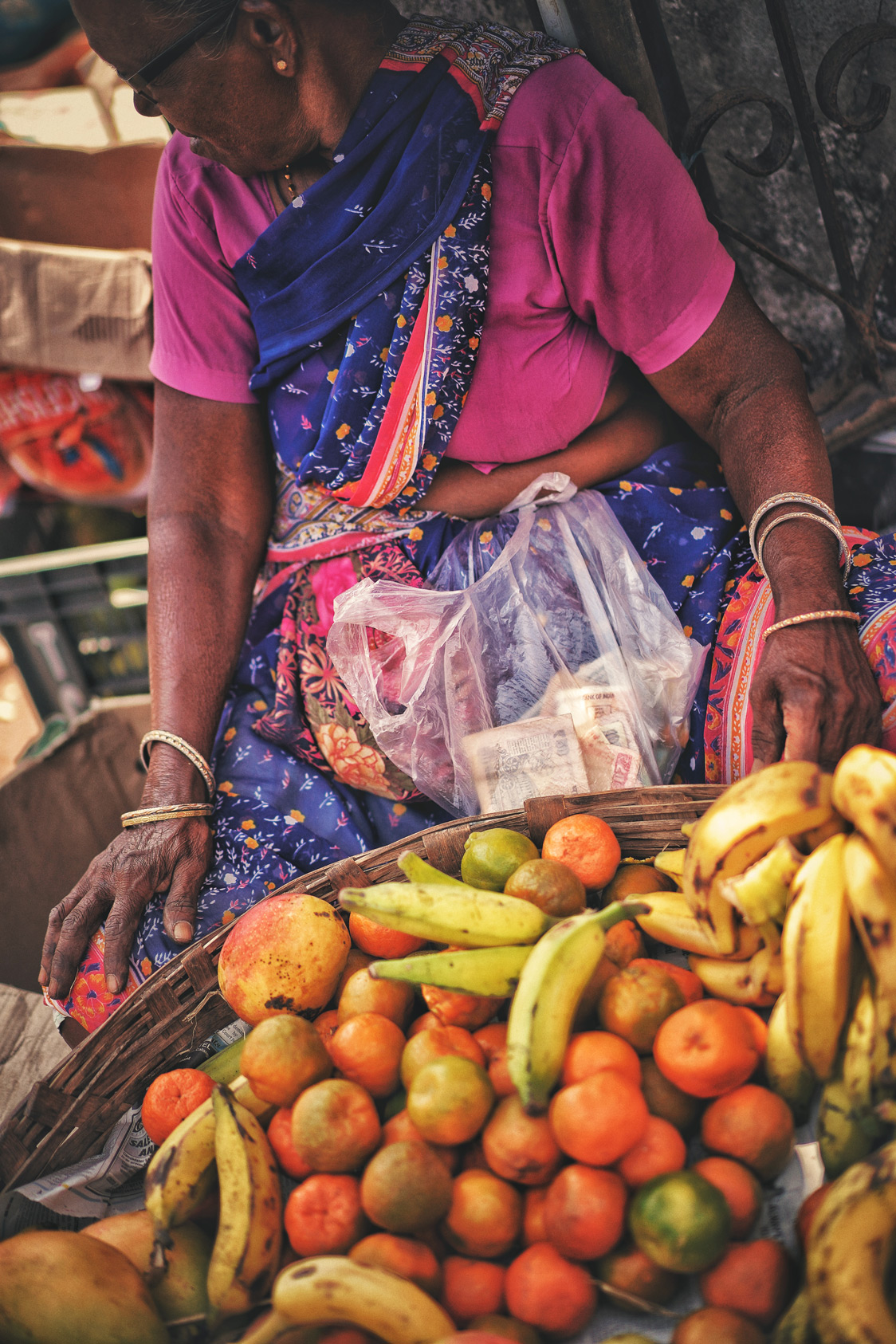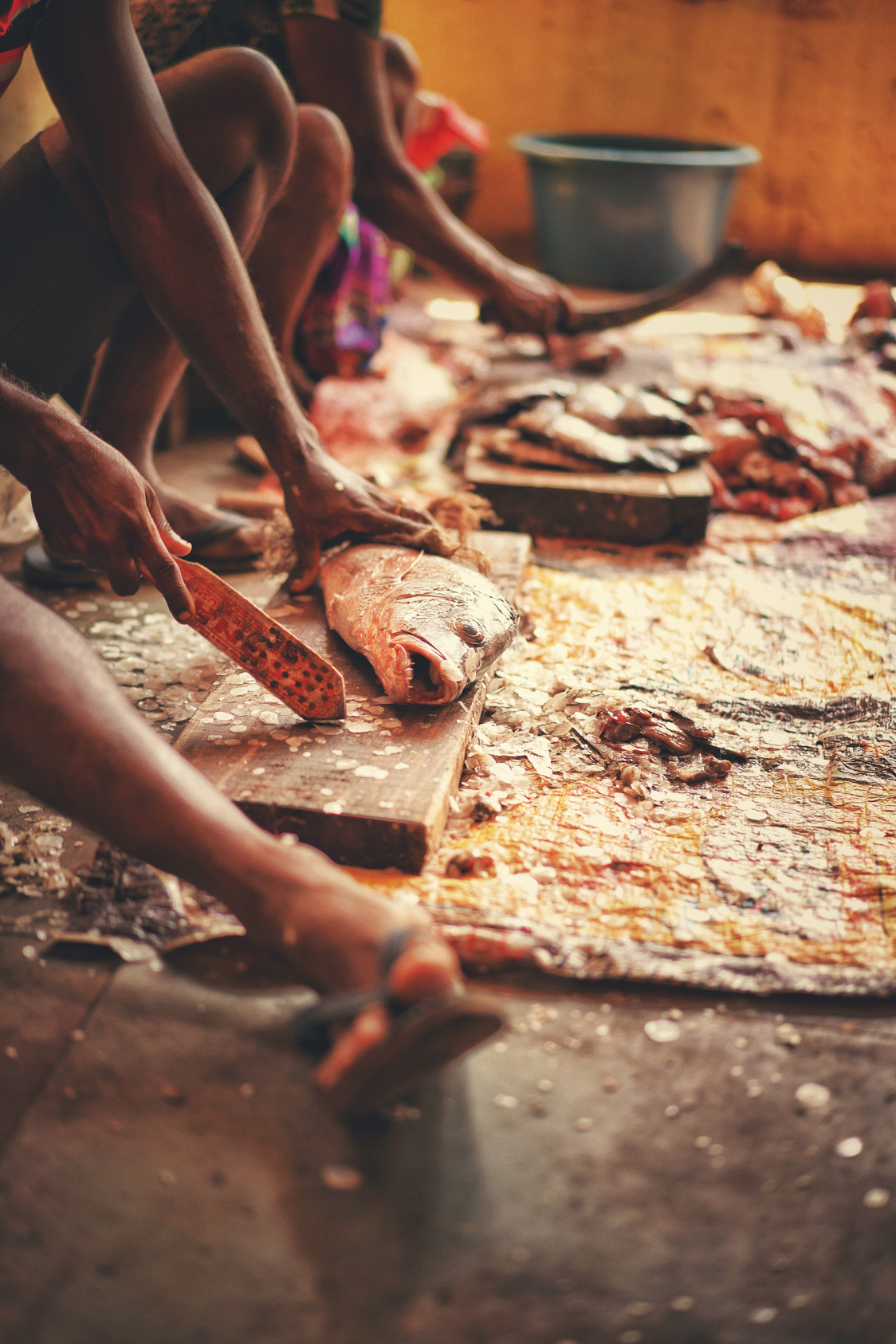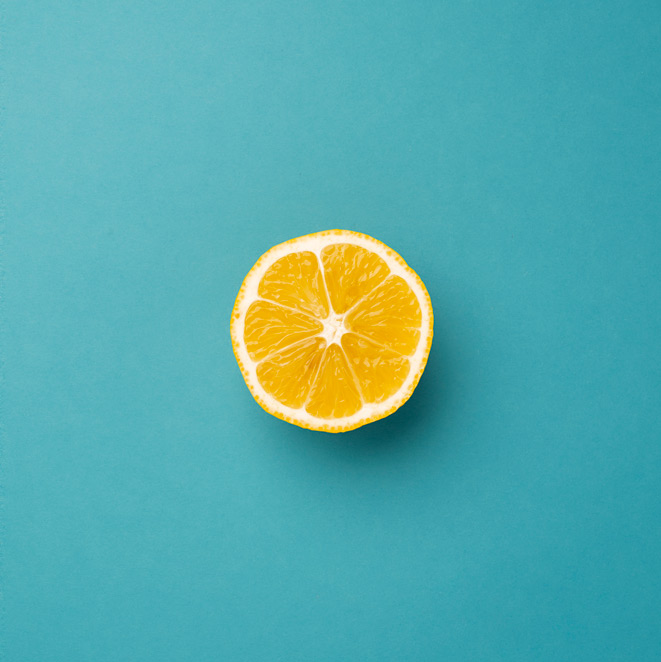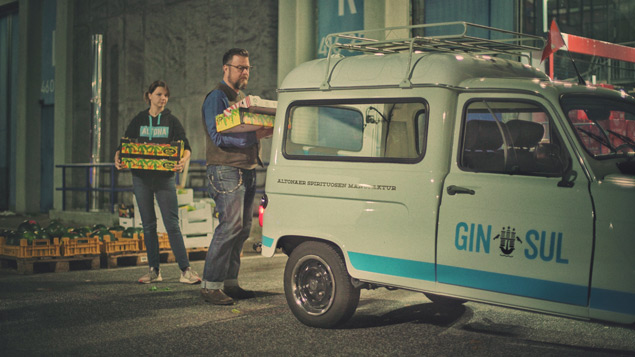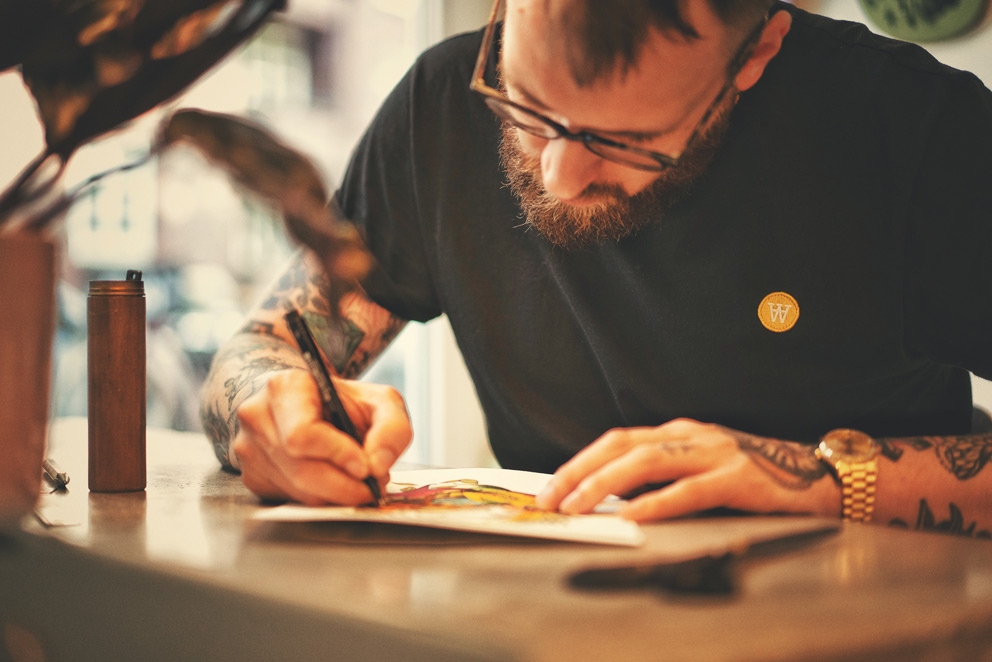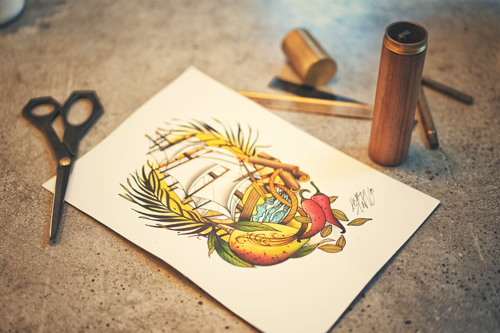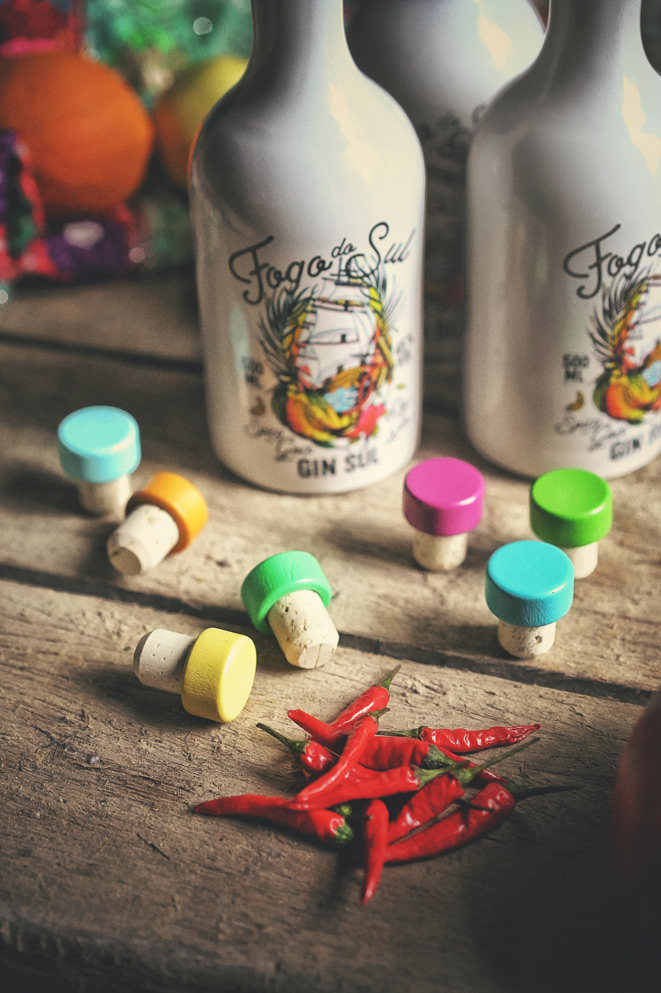FOGO do sul
Limited to 6,000 hand-numbered bottles
The Indian province of Goa was subject to Portuguese influence for more than 400 years. Discovered by Vasco da Gama as part of Portuguese India, traces of the seafarer can still be found all around to this day. The Portuguese brought peri-peri to the country and exported coriander, cardamom and cinnamon from India to Europe.
And we have taken them back to Hamburg with us – and macerated them with fresh mango, roasted cumin, coriander seed, chilli, fresh ginger, crushed cardamom and hot timut pepper to distil ‘Fogo do Sul’, the fire of the south.
Discovered in India. Distilled in Hamburg.
GOA and the PORTUGuese
Portuguese discoverer Vasco da Gama landed with his fleet at Calicut on the Indian coast for the first time in 1498. In 1510, the Portuguese captured the area surrounding the modern-day cities of Panaji and Velha Goa. From there, the Portuguese colonial masters ruled Goa for around 450 years. It became the centre of Portuguese India; until the 18th century, all Portuguese domains in India and East Africa were administered from here.
At the peak of Portuguese power in the 16th century, Velha Goa became a thriving city known as Goa Dourada – ‘golden Goa’.
In the 1920s, resistance against the colonial masters began to stir following the model of the freedom movement in British India. But it was only on 18 December 1961 that Indian troops marched into Goa with a force that was around 20 times superior. After 26 hours, the Portuguese troops capitulated; Portugal only recognised Goa’s incorporation into India in 1974 after the overthrow of its dictator during the Carnation Revolution.
Today, Panaji is the official name of the capital of the West Indian state of Goa. During Portuguese rule, it was known as Nova Goa – the names Pangim and Panjim (English) were also used.
Could also be Indian. Vasco da Gama’s signature.
Searching for spices
In April 2019, the three Gin Sul distillers Doris, Rafael and Stephan headed off to India in the footsteps of Vasco da Gama. The objective: finding the best spices and botanicals for a Spicy Goa Dry Gin.
Our loyal companion.
The Mahindra Thar, a licensed replica of the legendary Willys Jeep CJ-3B brought us to remote beaches and crowded markets. Neither dust nor cows on the street could stop him.
Cashew-Feni.
A typical cashew feni distillery with Ffreshly harvested cashew apples before distillation.
Anjuna is an old hippy village on the northern coast of the Indian state of Goa. At the Anjuna flea market each Wednesday until the start of the rainy season, curries, masalas and spices are offered in almost overwhelming diversity and quality.
FOGO DO SUL Botanicals
CEYLON CINNAMON
Also known as ‘real cinnamon’, Ceylon cinnamon originates from Sri Lanka. Portuguese seafarer Vasco da Gama brought the hand-rolled bark bundles to Europe in 1502.
FRESH GINGER
Before chilli arrived in East Asia, ginger was, alongside pepper, the only spicy culinary substance. India is the largest producer of ginger. Ginger has been known to the German-speaking world since the ninth century. It is one of the botanicals that gives this gin its pleasant heat.
fresh Mangoes
There are over 1,000 varieties of this sweet fruit. Mango trees can live to 300 years old and India is the main supplier by a long way. Indian cuisine would not be the same without mangoes – they are much loved in chutneys, for example.
At night in hamburg
Were do you finde the best mangoes in Hamburg? Well, at the Großmarkt. Unfortunately, only at night, because when the city is sleeping, at the Hamburg fruit wholesale market over 400 companies with 3,500 employees turn night into day. At 5 o'clock everything is already over. Time to peel fresh mangoes.
Roasted Botanicals
A huge part of our botanicals have been gently roasted in woks before maceration in order to develop the full flavor profile of the individual spices. Fresh chillies for the final kick.
Traditions that get under your skin:
Renowned tattoo artist Tobias Tietchen has developed the design for our special edition for the fourth time now.
colourful bottles
The wooden stoppers in the Fogo do Sul bottles are as colourful as the Holi festival (called Shigmo in Goa). The cork stoppers were manufactured in Portugal from wood and cork. Each bottle is hand-numered. Fogo do Sul is limited to 6,000 bottles.
Spicy G&T
Fogo do Sul & Tonic
5cl Fogo do Sul
20cl premium tonic water
+ one fresh chilli
PAST Specials editions:
Ruby Sul (2014), Cruzeiro do Sul (2015) , Rota do Sul (2016), Kleine Freiheit (2017) and Beijinho do Sul (2018) are entirely sold out.
Fogo do Sul Spicy Goa Dry Gin (2019)
Limited to 6,000 hand-numbered bottles.
45 % Vol., 500 ml




